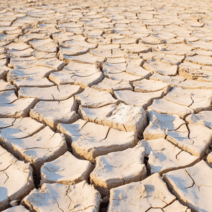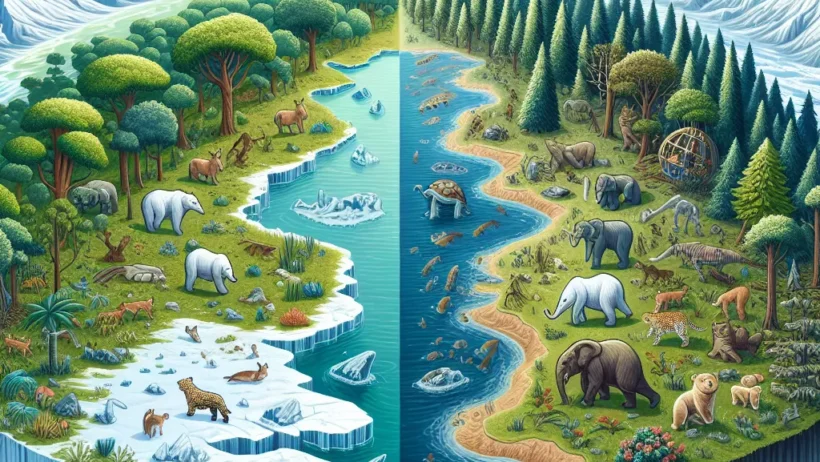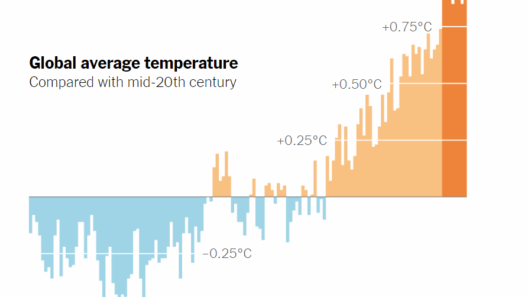Life in the ocean, characterized by its complexity and diversity, is a marvel of nature, yet it stands on the precipice of profound transformation due to global warming. The vast underwater world teems with organisms, from the minute phytoplankton that form the base of the marine food web to the majestic blue whale that glides through the depths. However, the increasing temperatures and changing chemistry of the oceans are reshaping these marine ecosystems, revealing not only the fragility of life beneath the waves but also the intricate interconnections that define it.
One of the most conspicuous effects of global warming on marine ecosystems is the phenomenon of coral bleaching. Corals are vital to marine life, providing habitat and shelter to countless species. Yet, they are particularly sensitive to temperature fluctuations. Elevated water temperatures induce stress in coral, causing them to expel the symbiotic algae, zooxanthellae, that provide them with essential nutrients and their vibrant colors. Without these algae, corals lose their primary source of energy, leading to widespread bleaching events. Such occurrences have already devastated large swathes of the Great Barrier Reef, jeopardizing both biodiversity and the livelihoods of those dependent on healthy marine environments.
Additionally, as ocean temperatures rise, their capacity to absorb carbon dioxide diminishes. The excess CO2 in the atmosphere is absorbed by the oceans, leading to ocean acidification—a process that alters the pH balance of seawater. This transformation poses a significant threat to calcifying organisms, such as mollusks, corals, and some plankton species. Shell formation becomes increasingly challenging in more acidic conditions, impacting entire food webs. The decline of these foundational species has cascading effects, disrupting the myriad relationships that sustain the oceanic ecosystem.
Moreover, global warming disrupts the distribution patterns of marine species. Many fish species are shifting towards cooler waters, moving poleward or to deeper depths. This migration can have dire consequences for local fishing industries, affecting both fish populations and their predators, including humans. Since many coastal communities rely heavily on fishing for sustenance and economic stability, the shifting availability of these resources can lead to increased competition, conflicts, and sociocultural upheaval.
The changing climate also contributes to the alteration of marine habitats. The melting of polar ice caps and glacial retreat are reshaping coastlines and impacting ecosystems dependent on stable ice environments. Species such as polar bears and seals, which rely on ice for breeding and hunting, face diminished habitats. As these ecosystems collapse, the interconnected web of the ocean grows increasingly frayed, with repercussions that resonate far beyond the immediate area.
Furthermore, warmer oceans create conducive conditions for the proliferation of harmful algal blooms (HABs), including red tides. These blooms can produce toxins detrimental to marine life and human health, leading to the contamination of drinking water and fish stocks. Additionally, HABs can produce hypoxic zones, or “dead zones,” where the lack of oxygen results in mass die-offs of marine organisms. The emergence of these dead zones due to nutrient runoff combined with elevated water temperatures presents a pressing challenge for marine stewardship.
In examining the profound effects of climate change on marine ecosystems, one cannot ignore the human element of this crisis. Overfishing, pollution, and habitat destruction compound the impacts of global warming, creating a perfect storm that threatens the future of oceanic biodiversity. Conservation efforts must not only focus on mitigating climate change but also address these human-induced threats to foster resilient ecosystems capable of withstanding environmental stresses.
Education and awareness play pivotal roles in advocating for marine conservation. By fostering a deeper understanding of the interdependencies within ocean ecosystems, society can galvanize collective action to protect these vital resources. Initiatives such as marine protected areas (MPAs) are essential for preserving critical habitats and ensuring the sustainability of marine life. Such measures can provide sanctuary for numerous species, allowing ecosystems the necessary time to recover and adapt to changing conditions.
Ultimately, the quest for resilience in the face of climate change requires a holistic approach that acknowledges the complexity of marine ecosystems. Strategies must integrate scientific research, indigenous knowledge, and stakeholder engagement to create adaptive management plans that respond effectively to the challenges posed by global warming. The ocean is not just a resource to be exploited; it is a richly woven tapestry of life, deserving of respect and protection.
The urgency to act cannot be overstated. As we gaze into the depths of the ocean and marvel at its wonders, we must also confront the harsh realities that threaten its existence. The time to listen to the ocean’s call for help is now. Protecting marine ecosystems is not only an environmental issue but a moral imperative; safeguarding the health of our oceans safeguards the future of life on Earth itself.







